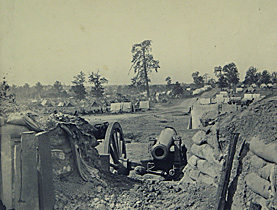“Old” Bern rediscovers New Bern

Religious persecution, Indian wars, intrigue and bankruptcy – the story of the founding of New Bern could not be more dramatic - or American, as it has a happy ending.
The latest exhibition at Bern’s History Museum sheds light on the key events surrounding the founding of New Bern in the United States by the Swiss Christophe de Graffenried in 1710. The show is Bern’s contribution to the North Carolina city’s tricentennial celebrations.
What the exhibition, Bern New Bern, lacks in historical objects or multimedia displays it makes up for in its uncluttered and unpretentious approach to telling the story of a town which could be the tale of anytown, USA, but one with a uniquely Swiss angle.
A life-size figure of de Graffenried is the red thread through the first part of the show, as a dreamer – his sights set on faraway lands, and at the Queen of England’s court receiving a royal blessing to settle territory in the Carolinas with German and Swiss religious dissidents.
Only a few steps away, de Graffenried is depicted on his knees, watched over by his Indian captors. The scene is symbolic of the fall of de Graffenried and the end of his American dream.
But besides the misfortunes of the Bernese adventurer, the museum attempts to put into perspective the early 18th century socio-economic conditions that paved the way for de Graffenried to enter the history books.
Beset by financial failure, de Graffenried is lured by the promise of silver in the new world, and finds himself in favour of both the Bernese authorities and English crown who use him as a pawn to get rid of religious dissenters.
Once on the piece of land he names New Bern, he is caught between the jealousy and mistrust that existed between the English administrators, the German-speaking settlers and the local Indian tribes who felt double-crossed over their land rights.
Swiss roots reminders
The second part of the exhibition presents New Bern’s rebirth with a focus on the American Civil War period, the industrialisation of the city, the invention of Pepsi Cola by a local pharmacist, and present day reminders of New Bern’s Swiss roots.
The curator of the exhibit, Max Werren, had the challenging task of telling a story that is of interest to both Swiss and Americans, since the show will move from Bern to New Bern. It will be at the History Museum until May 16, and then taken to New Bern where it will have a four-month run starting in September.
“It will be interesting for the people of New Bern to see that a Bernese patrician – this is rare – receives the title of Landgrave of Carolina and conquers territories in the southern part of the United States in the name of the English crown,” Werren told swissinfo.ch.
He added that other exhibits that have investigated Swiss emigrations to the US focus on the success of Swiss pioneers.
“This exhibition is divided; presenting the success of the founding of a new city but also highlighting the tragedy of a Bernese – a man who came back to Bern without any illusions about the place he founded.”
Bern New Bern marks the first time the city’s history museum has hosted an exhibit it has not organised itself. Behind the show is the private association, 300 Years New Bern, led by members of Bern’s von Graffenried family. This is its contribution to the jubilee celebrations.
Firemen
But according to Aloys von Graffenried, putting on an exhibition was not the first idea that came to mind.
“At the start, we considered a student exchange, and we also thought about bringing a group of firemen here from New Bern, and then we suddenly had the idea of an exhibition, which we could show here and in New Bern,” von Graffenried told swissinfo.ch.
“I knew the history of New Bern but not in the detail that is presented here. I’m much more familiar with New Bern now.”
Von Graffenried believes the exhibit will enrich the relationship between the two cities.
Ties were rekindled in 1891 at the initiative of the-then mayor of New Bern who came to the Swiss capital to attend its 700th anniversary celebrations.
After this, New Bern asked if it could adopt the coat of arms of the mother city.
Five years later, a Bernese delegation travelled to New Bern and donated a flag.
Since then, a bear has been the symbol of both towns.
Dale Bechtel, swissinfo.ch
De Graffenried was born in his ancestral village of Worb in 1661 and died there in 1743. His father, Anton, was Lord of Worb and a minor government official.
De Graffenried studied at the universities of Heidelberg and Leyden. During his travels to London, he met the Duke of Albemarle and other Lords Proprietors of Carolina.
Back in Switzerland, he met a Swiss explorer, Franz Ludwig Michel, who persuaded him to join and invest in a company that proposed to mine American silver deposits and to settle Swiss and Swiss Anabaptists in Pennsylvania or Virginia.
The company broadened its plans to settle colonists in the province of Carolina and to include among them many Palatines.
The company purchased from the Lords Proprietors nearly 19,000 acres of land on the Neuse and Trent rivers, including the future site of New Bern, and on the White Oak River, which de Graffenried called by the Indian name of Weetock.

In compliance with the JTI standards
More: SWI swissinfo.ch certified by the Journalism Trust Initiative















You can find an overview of ongoing debates with our journalists here . Please join us!
If you want to start a conversation about a topic raised in this article or want to report factual errors, email us at english@swissinfo.ch.